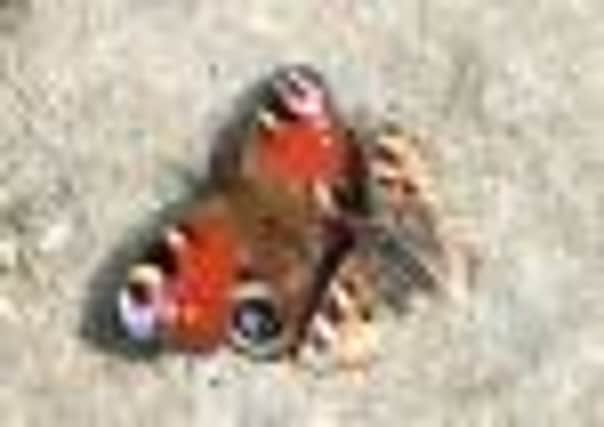Courting couple happy with mis-match of the day


Some of these hibernated individuals may have gone to sleep soon after emerging last summer, while others may have been flying for some days and got quite worn. So in spring, you can come across very fresh-looking individuals as well as some which look to be on their last legs.
Once out and about, these butterflies are geared up to mating as soon as possible. After all, in a more typical year April often swings between summer and winter on an almost daily basis and a butterfly has to make the most of whatever sunshine becomes available. And when it does, peacocks and small tortoiseshells indulge in some quite elaborate courtship.
Advertisement
Hide AdAdvertisement
Hide AdThe male creeps up behind a likely female and begins to drum on her wings with his antennae. If she is not receptive she will zigzag away and quickly lose him.
But if she is happy with the approach she will just fly a short distance and encourage him to drum again. He will then accompany her for as long as it remains warm enough and she keeps moving around. Finally, they will disappear into the depths of a nettle patch or perhaps into some nearby shrub or tree and spend the night together.
Although you will see many other species of butterfly joined together “in cop”, it is unlikely you will ever have seen a peacock or small tortoiseshell, even though they are so widespread and common. Very few people have ever managed to photograph them either as the action is normally so well hidden away and in darkness.
My illustration of a courting pair is equally rare. It was taken by Terry Butcher in Withernsea. What possessed a male small tortoiseshell to court a female peacock? Perhaps she was giving out a lot of perfume in the form of pheromones. Or maybe it was so desperate it didn’t notice.
Advertisement
Hide AdAdvertisement
Hide AdHybridisation is possible in some closely related species, but I doubt it could have happened here.
We have not been alone in experiencing a cold winter followed by a warm spring. It has been much the same on the near continent with France breaking records in recent days having temperatures up to 32˚C. This has triggered an early start to the annual migratory movement of Painted Ladies out of North Africa. They breed and build up numbers throughout the winter and head northward at the first signs of spring. But cooler weather and contrary winds in the north usually restricts them to southern France and Spain in April and May where they breed and their offspring head north to reach us in June/July time.
However, a sighting at North Cave Wetlands nature reserve (just west of Hull) by Gary Dayes and Mike Bayldon on April 3 beats the earliest-ever reported record (April 6, 1985 at Spurn) and was the first indication that an unusually early migration was underway.
If you are lucky enough to spot one yourself, or anything else of interest, do please register it on our Butterfly Conservation website. Looking back through the recent records, I see that April Painted Ladies in Yorkshire are becoming more common. So too are long, dry sunny springs. There may well be a connection.
Howard Frost, a recording co-ordinator for Butterfly Conservation Yorkshire, can be contacted via www.yorkshirebutterflies.org.uk.